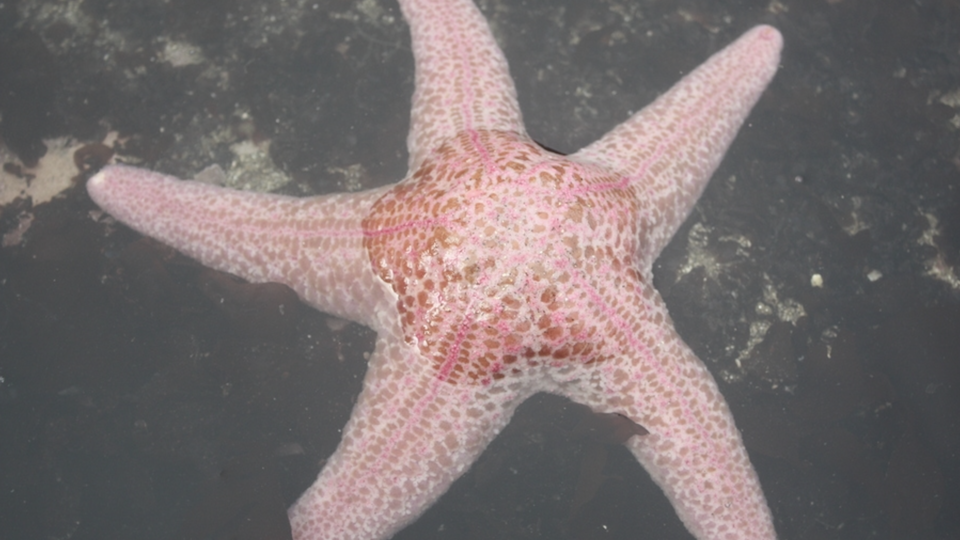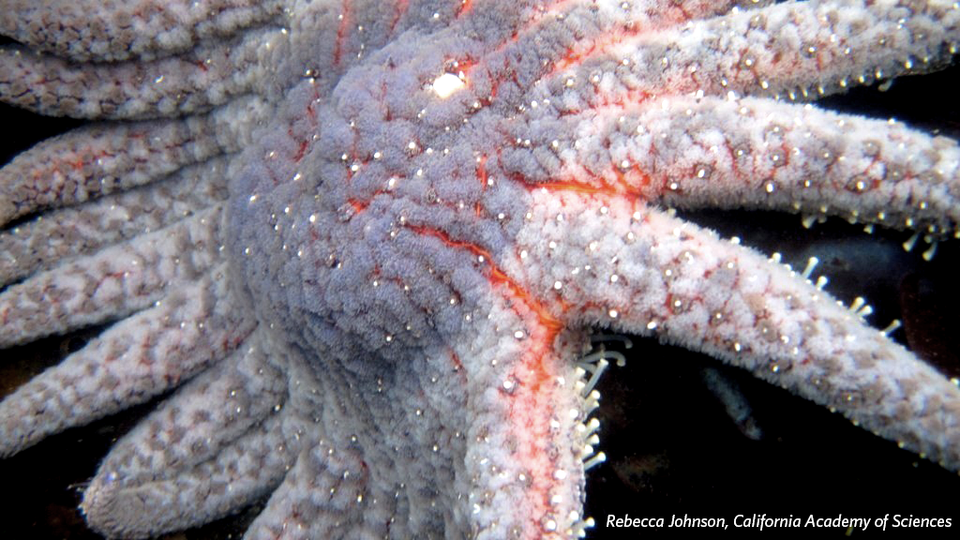We’re especially keeping an eye out for sunflower stars and giant pink sea stars, but we want to document as many star species as possible.
Sunflower stars are incredibly important keystone predators in our kelp forests and were especially hard-hit by sea star wasting syndrome. While we know there are some sunflower star populations still out there, they’re pretty hard to find. Someone observed a sunflower star sea on November 16, 2023, in Humboldt — let's see if we can find more!
More people searching for sea stars means more chances of finding and documenting them — we’re hopeful that by coming together to search for these keystone species, we can better understand and restore sea star populations in the long run. (Psst, a fun bonus: December low tides are pretty phenomenal for exploring.)
Keep reading for how to join the Solstice Sea Star Search!

